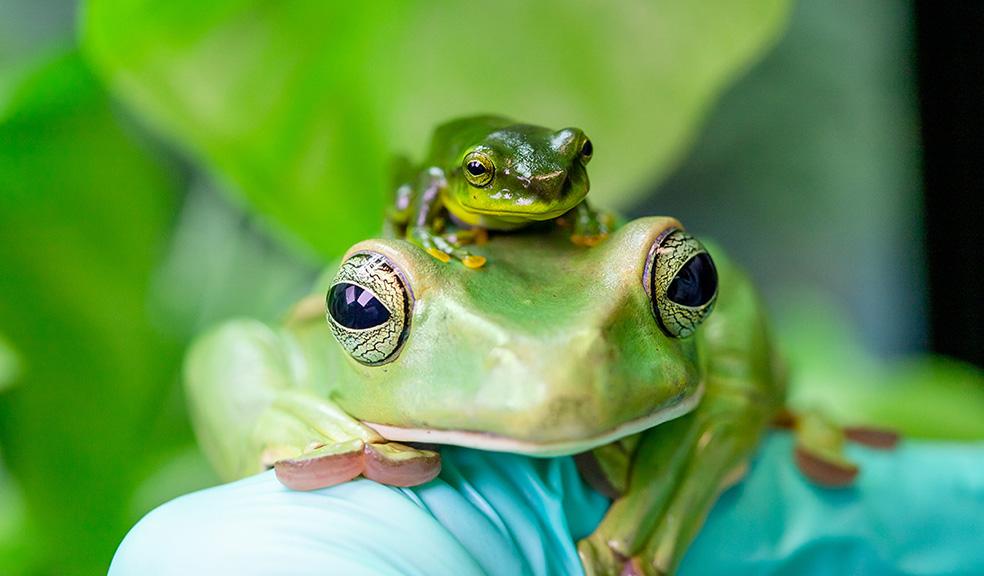
Big frog, little frog
Frogs come in all shapes and sizes – as these two demonstrate. Paignton Zoo photographer Eleanor Stobbart took this stunning image of a young Thao whipping frog on top of an adult of the same species to mark World Frog Day, on Wednesday 20th March. The species has just bred at Paignton Zoo for the very first time.
Like so many species of exotic frog, this one goes by different names. It’s the Thao whipping frog, Fea’s tree frog, or Fea's flying frog… The one thing we can agree on is the scientific designation, Rhacophorus feae.
The whipping part of the name comes from the way the females use their back legs to whip up foam to make a nest for their eggs Thao comes from the Thao river, which flows through China and Vietnam. The Thao whipping frog is found in parts of China, Laos, Vietnam, Thailand and Myanmar.
How did the keepers go about breeding this species? Senior Paignton Zoo keeper Dr Katy Upton explained: “This is our first time breeding them. We raised the temperatures by a couple of degrees and moved them into a larger specialist breeding enclosure, then increased the humidity and sprays. The enclosure is half water with a land area planted with bamboo and large bamboo canes for them to sit on. Within a couple of days of being in this enclosure they spawned!”
There is currently no European Endangered species Programme or studbook for the species. Katy again: “There are other collections working with this species – this is not a UK first but it is still another great achievement for Paignton Zoo!”
This is one of the largest tree frogs in the world. It’s known as a flying frog – but can it really fly? Honestly, no. But it has long toes with strong webbing between; it can drop from a tree and slow its fall to a glide (a trick known as 'parachuting'). It’s not really flying, but it is pretty impressive falling.
Its natural habitat is tropical forest, rivers, swamps and irrigated farmland; it breeds on quiet, shaded reaches of mountain streams. Their frothy nests tend to be near or above the water, and the tadpoles drop into the water when they hatch. This species is threatened by habitat loss and collecting for food.













